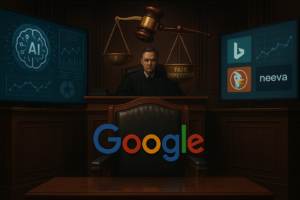The Dawn Project: A Wake-Up Call for AI Safety and Accountability
In the wake of growing concerns about artificial intelligence, Dan O’Dowd’s Dawn Project sheds light on critical defects in AI systems, demanding stricter safety standards and accountability from tech giants. This article explores the implications of these revelations on public safety and regulatory frameworks.
As artificial intelligence continues to permeate every aspect of our lives, a storm of skepticism brews around its safety and reliability. The Dawn Project, spearheaded by software billionaire Dan O’Dowd, has emerged as a clarion call, urging both the public and regulators to take a closer look at the hidden flaws within AI systems. This initiative not only critiques the technological rush but also highlights the potential consequences of deploying flawed AI in critical infrastructure.
O’Dowd, known for his groundbreaking work in software that prioritizes security and reliability, has launched a public awareness campaign focused on the inherent vulnerabilities in AI technology. His company, Green Hills Software, specializes in creating systems that are resistant to hacking and critical to national security—think nuclear bombers and NASA spacecraft. The Dawn Project’s mission is to ensure that the standards for software used in public safety are not only met but exceeded.
Focus on Self-Driving Technology
One of the main focuses of the Dawn Project has been the self-driving technology developed by Tesla. O’Dowd’s campaign has drawn significant attention through full-page ads in major publications like the Wall Street Journal and the New York Times, warning of the dangers posed by AI systems that are not adequately tested. The ads highlight the potential for catastrophic outcomes if these technologies are not held to the highest standards of safety, particularly in areas such as:
- Transportation
- Critical infrastructure
- Water systems
- Power grids
Critics of the AI boom, including journalists and technology experts, have echoed O’Dowd’s sentiments. Anecdotes from individuals who have tested autonomous vehicles raise alarm bells. For instance, Rolling Stone’s Miles Klee noted that despite the promise of accident prevention, his experience with a Tesla vehicle was unsettling, with the technology often feeling more like a hazard than a safeguard.
Critique of the Tech Industry
The Dawn Project also critiques the broader tech industry, accusing Silicon Valley giants—collectively dubbed the “Magnificent Seven” (Alphabet, Amazon, Apple, Meta, Microsoft, NVIDIA, and Tesla)—of prioritizing profit over safety. O’Dowd’s campaigns point out that these companies have fostered a frenzy in AI marketing, often misrepresenting the capabilities of their products to investors and consumers alike.
At the heart of the Dawn Project’s advocacy is a plea for stricter regulations and accountability in the AI sector. O’Dowd argues that the same rigorous standards applied to military and aerospace software should be enforced for AI systems deployed in civilian life. His vision is to create a framework that ensures all AI technologies are safe, secure, and beneficial to society.
As we stand on the brink of an AI-driven future, the Dawn Project serves as a crucial reminder of the responsibilities that come with technological advancement. O’Dowd’s efforts challenge us to reconsider how we approach AI safety and accountability, making it clear that the rush to innovate must not overshadow the imperative to protect public welfare. The conversation around AI is no longer just about what these technologies can do; it’s about ensuring they do no harm.


